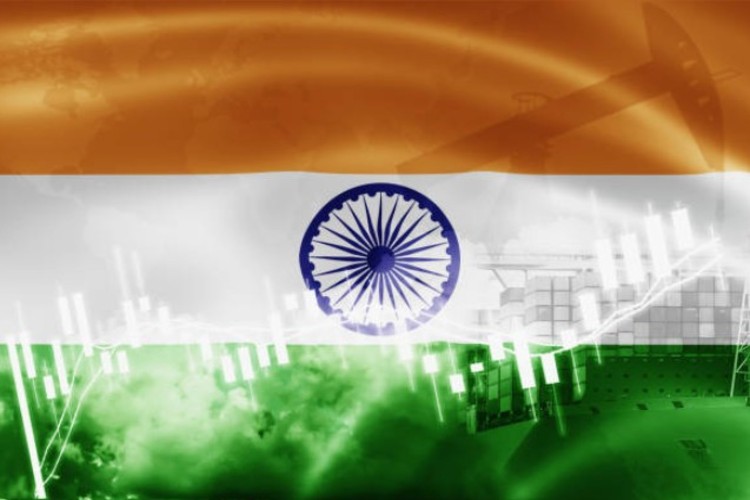Indian economy: India is celebrated as one of the world’s fastest-growing and fourth-largest economies, shaping the future of trade, technology, and investment. Yet behind the headline growth numbers, cracks are visible. Declining household savings, sluggish investment, and weak employment are emerging as structural headwinds. These trends are not isolated: savings fuel investment, investment drives job creation, and jobs generate incomes that replenish savings. A breakdown in this cycle risks undermining the growth momentum.
Domestic savings have slipped from 34% of GDP in 2011–12 to just above 30% in 2022–23, according to the National Accounts Statistics. Household savings fell more steeply—from 23.6% of GDP in 2011–12 to 18.4% in 2022–23. Within this, net household financial savings shrank to 5.26% of GDP in 2022–23 from 7.26% in the previous year, as financial liabilities climbed to 5.78%. Rising borrowing, driven by higher inflation and interest rates, explains much of this shift.
READ | Generative AI trust crisis grows amid booming adoption
At the same time, households moved more into physical assets (12.9% of GDP in 2022–23) and gold (0.24%), but this did not compensate for the decline in financial savings. The change reflects both macroeconomic pressures and cultural shifts. Younger households, influenced by rising consumerism, appear less inclined to follow the traditional life-cycle savings model. With low returns on deposits and easy access to credit, many are prioritising consumption over savings. The consequence is shrinking liquidity in the banking system, which constrains lending for business and infrastructure. As Keynes noted, savings are the raw material for investment; when domestic savings fall, dependence on volatile foreign capital rises.
Weak employment growth
High GDP growth has not translated into strong job creation. The employment rate dropped from 50.9% in 2017–18 to 46.8% in 2022–23, according to the Periodic Labour Force Survey. The decline is sharpest among youth (15–29 years), with only 35% employed in 2022–23.
The India Employment Report 2024 highlights how youth unemployment nearly tripled between 2000 and 2019, peaking at 17.5% before easing to 12% in 2022. But this masks deteriorating job quality: many young workers remain trapped in low-paying informal work or unpaid family roles. Among graduates, unemployment was as high as 29% in 2022, compared with just 3% for those with no education—evidence of a severe skills mismatch.
The structural problem is compounded by inadequate vocational training—only 4% of youth have received formal training—and by widespread underemployment, with two-fifths of technically qualified youth in jobs unrelated to their skills.
Gender and caste disparities deepen the challenge. Scheduled Castes and Scheduled Tribes face higher unemployment rates than other groups. Women remain most disadvantaged: nearly half of young women were neither in education, employment, nor training (NEET) in 2022, accounting for 95% of India’s NEET population.
Sectoral imbalances add to the strain. Manufacturing, with the capacity to absorb semi-skilled workers, is stuck at about 13% of GDP. Services are expanding but are less labour-intensive, while agriculture has reabsorbed workers post-COVID—reversing India’s slow structural transformation. Automation in both manufacturing and services is further curbing labour demand, pointing to the risk of “jobless growth.”
Indian economy: Declining investment
Gross Fixed Capital Formation has slid from 34.3% of GDP in 2011–12 to 29.4% in 2022–23, according to the Ministry of Statistics and Programme Implementation. The fall reflects high borrowing costs, policy uncertainty, and fragile business confidence. Episodes such as retrospective taxation have added to the drag.
From a growth perspective, weaker investment restricts capital accumulation, slowing infrastructure building and industrial expansion. This further dampens job creation and reduces household incomes, reinforcing the savings decline.
Historically, savings and investment have moved together. Today, both are weakening simultaneously, amplifying the macroeconomic stress. The cycle is clear: low savings curb investment, weak investment reduces jobs, and fewer jobs depress incomes and savings. Breaking this chain requires a revival of investment, which can in turn lift incomes and rebuild household savings.
Interconnected challenges
The three challenges—declining savings, weak employment, and slowing investment—are part of a self-reinforcing cycle. Reduced savings shrink the pool of capital available for lending. Low investment restrains job creation, pushing more workers into insecure or informal employment. Depressed household incomes then lead to lower savings, perpetuating the cycle.
Caste and gender disparities, weak vocational training, and stagnant manufacturing deepen these structural rigidities. The result is a growth path vulnerable to external capital flows and unable to deliver on the promise of a demographic dividend.
India’s macroeconomic paradox is stark: rapid GDP growth coexisting with weakening fundamentals. Reviving investment should be the immediate priority, supported by lower borrowing costs, regulatory stability, and incentives for private capital. Expanding vocational training and boosting manufacturing must complement this push. Policies that improve women’s workforce participation and reduce barriers for marginalised groups will also be critical.
Reinforcing the savings–investment–employment cycle is the key to transforming today’s vulnerabilities into a foundation for inclusive, sustainable growth.
Dr Jadhav Chakradhar is Assistant Professor of Economics at Centre for Economic and Social Science (CESS), Hyderabad. Adrija Ganguly is a research student at Indian Institute of Technology, Kharagpur.

